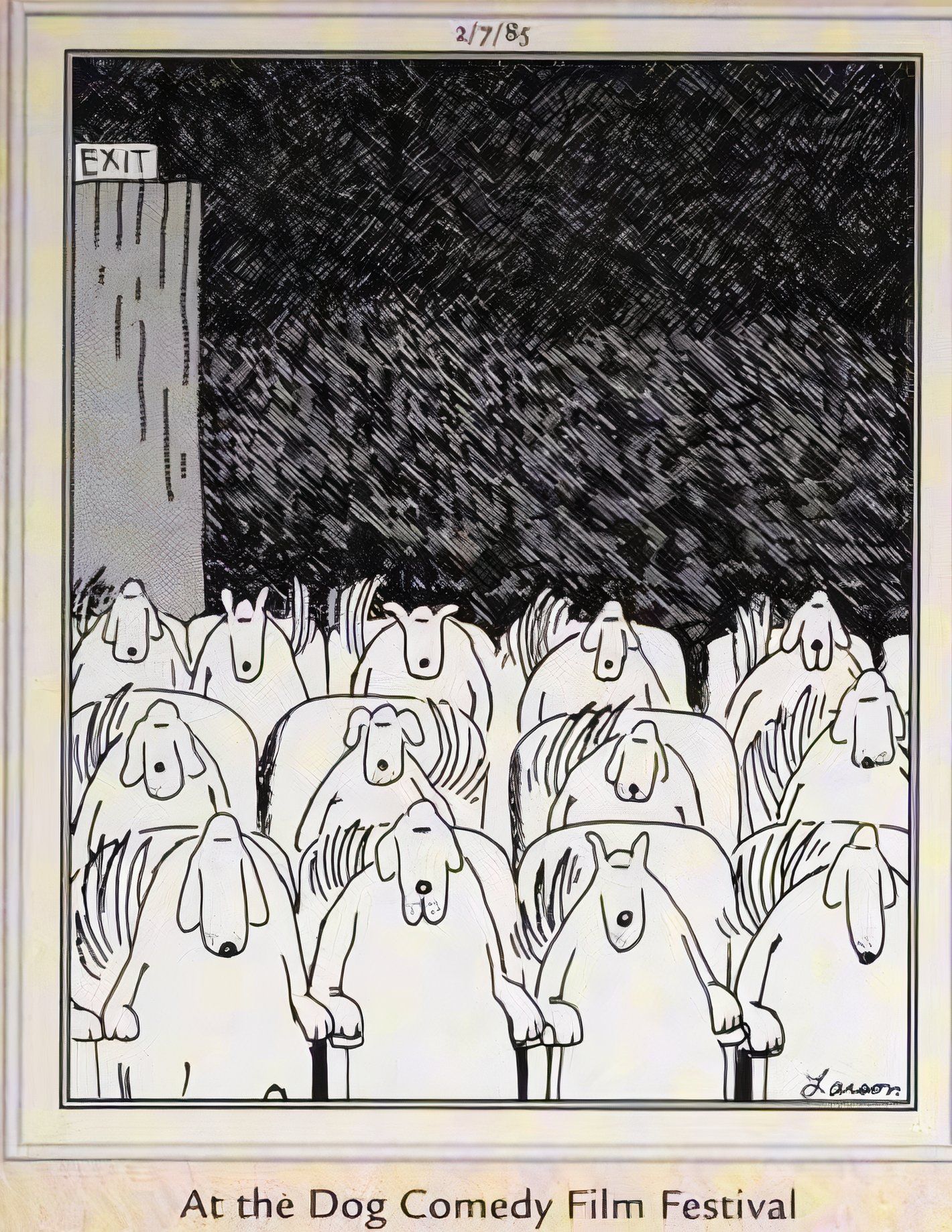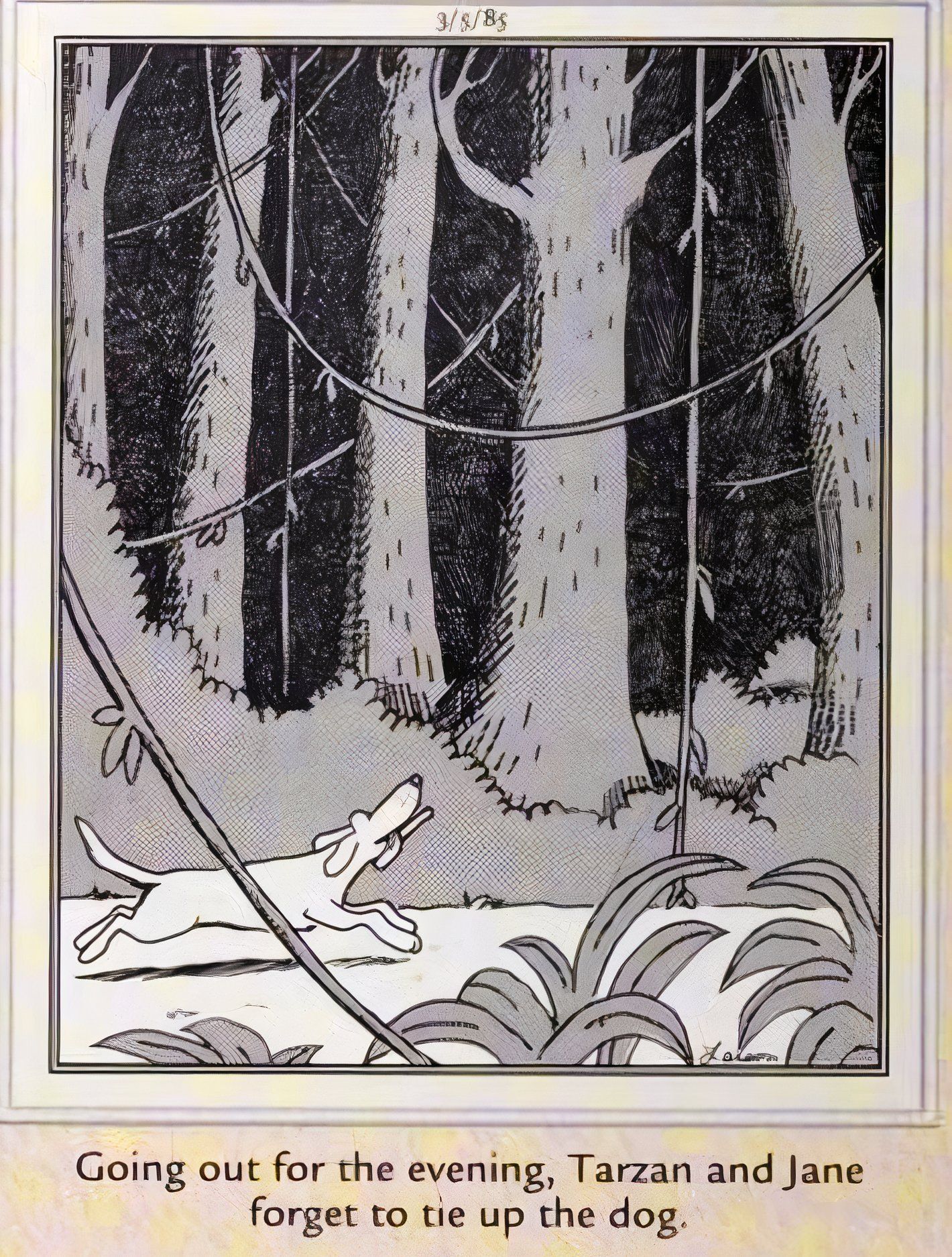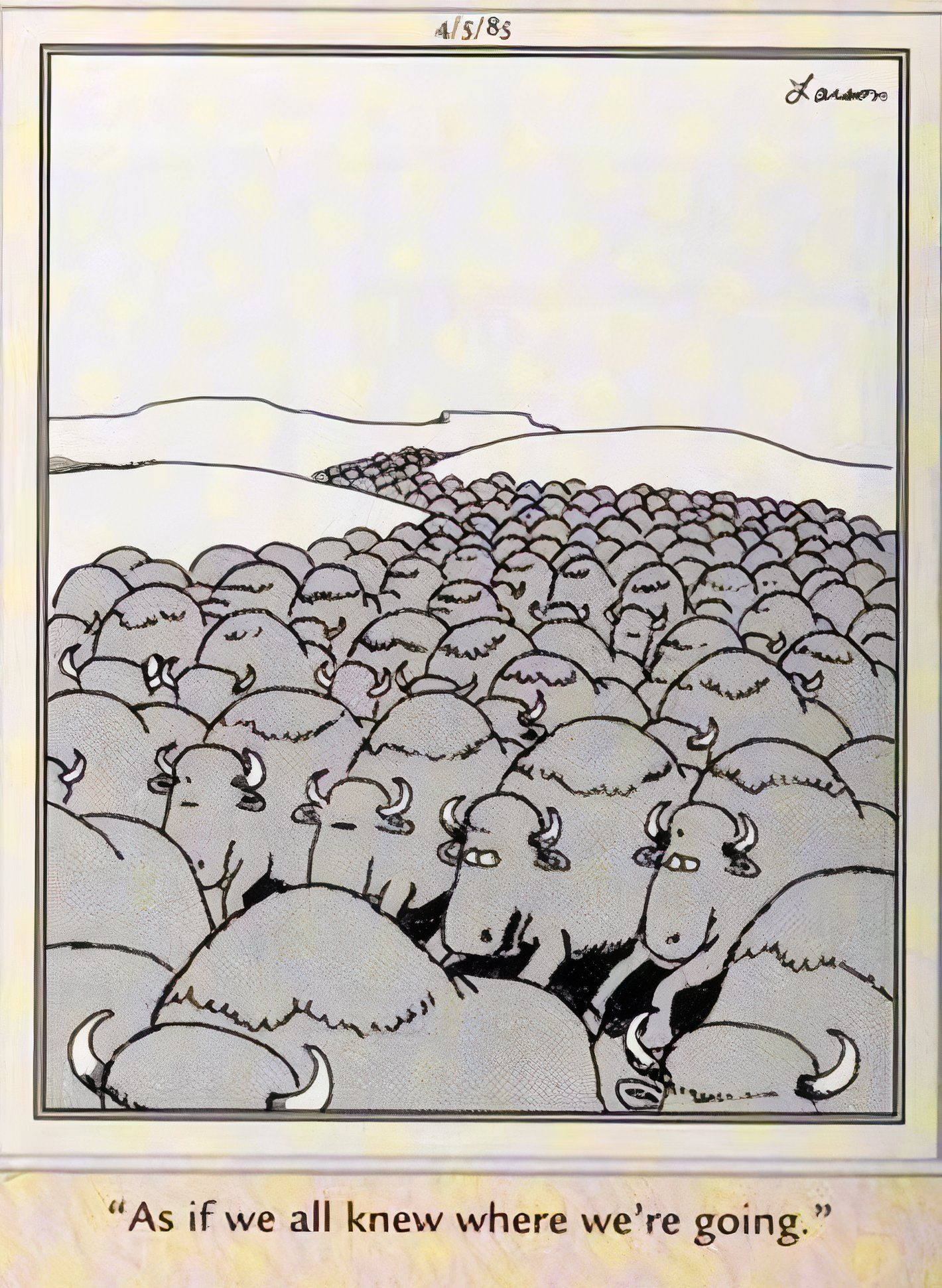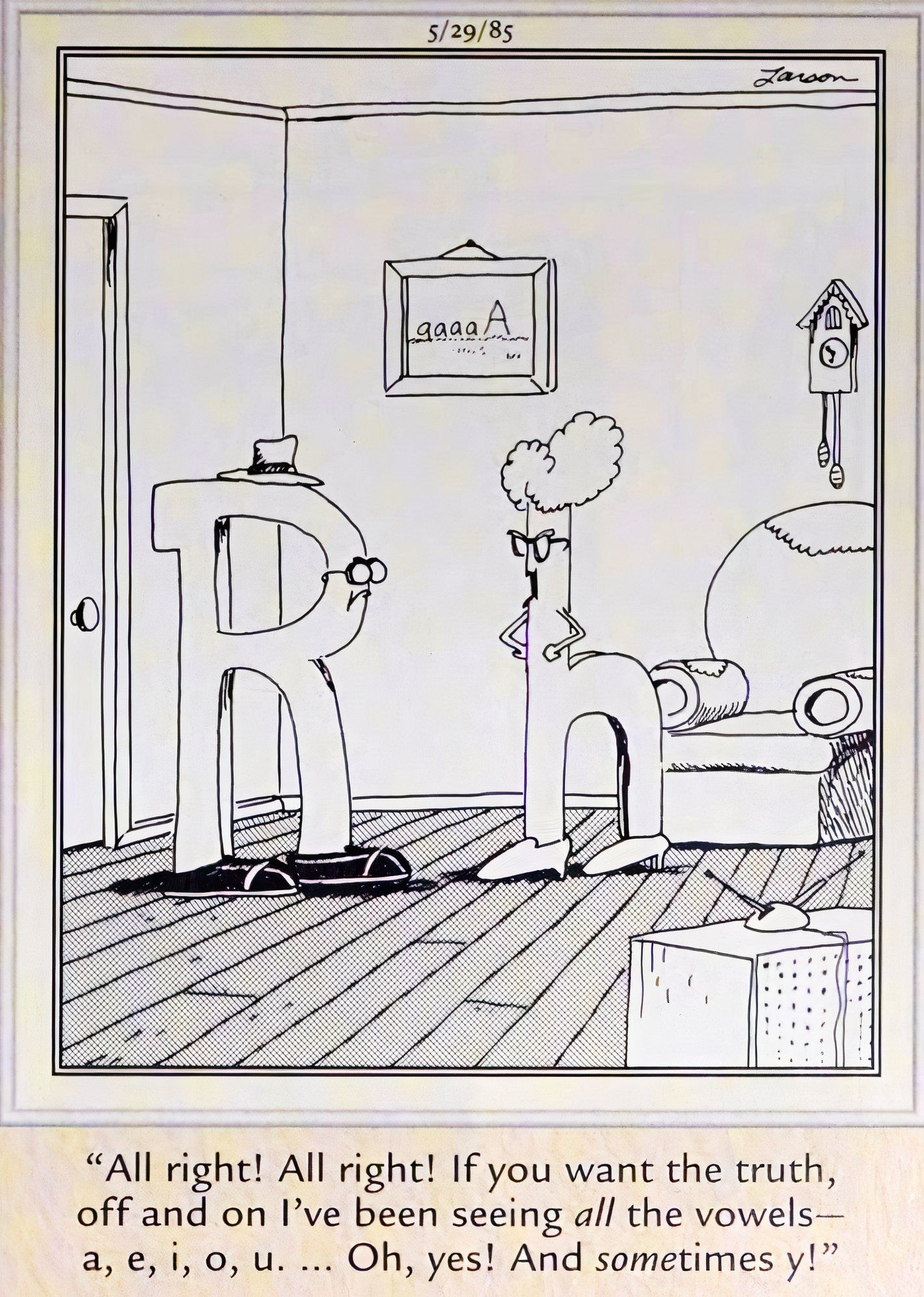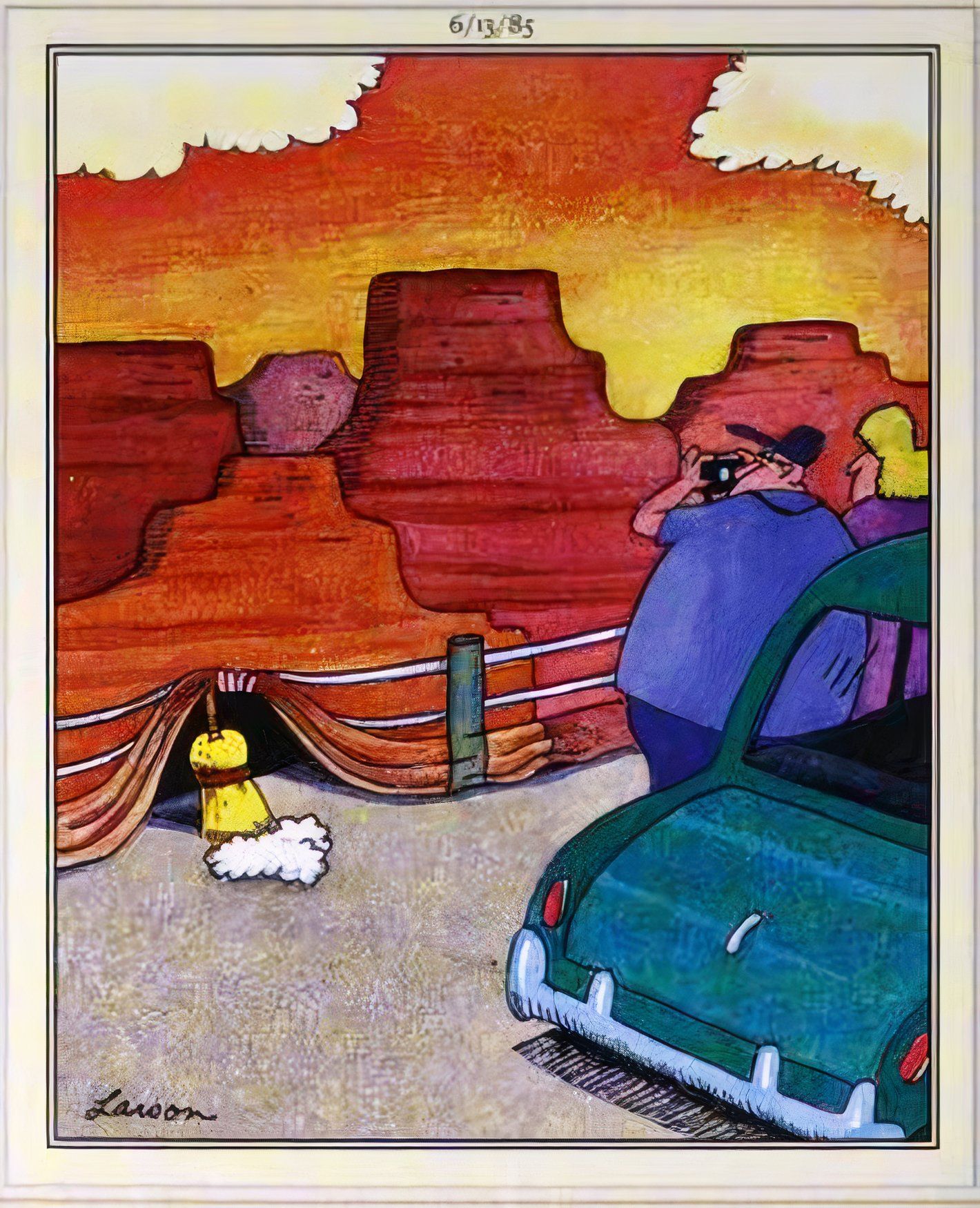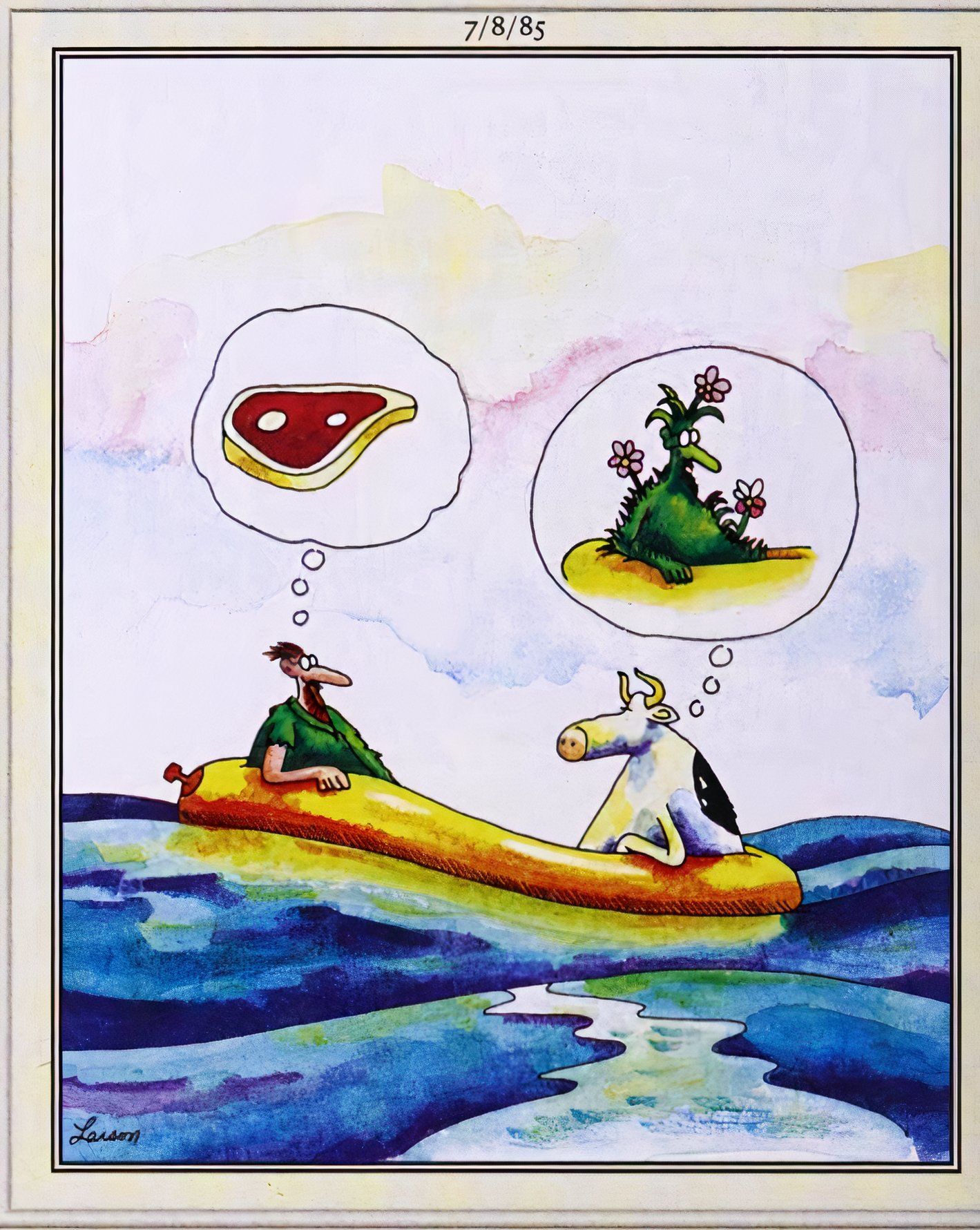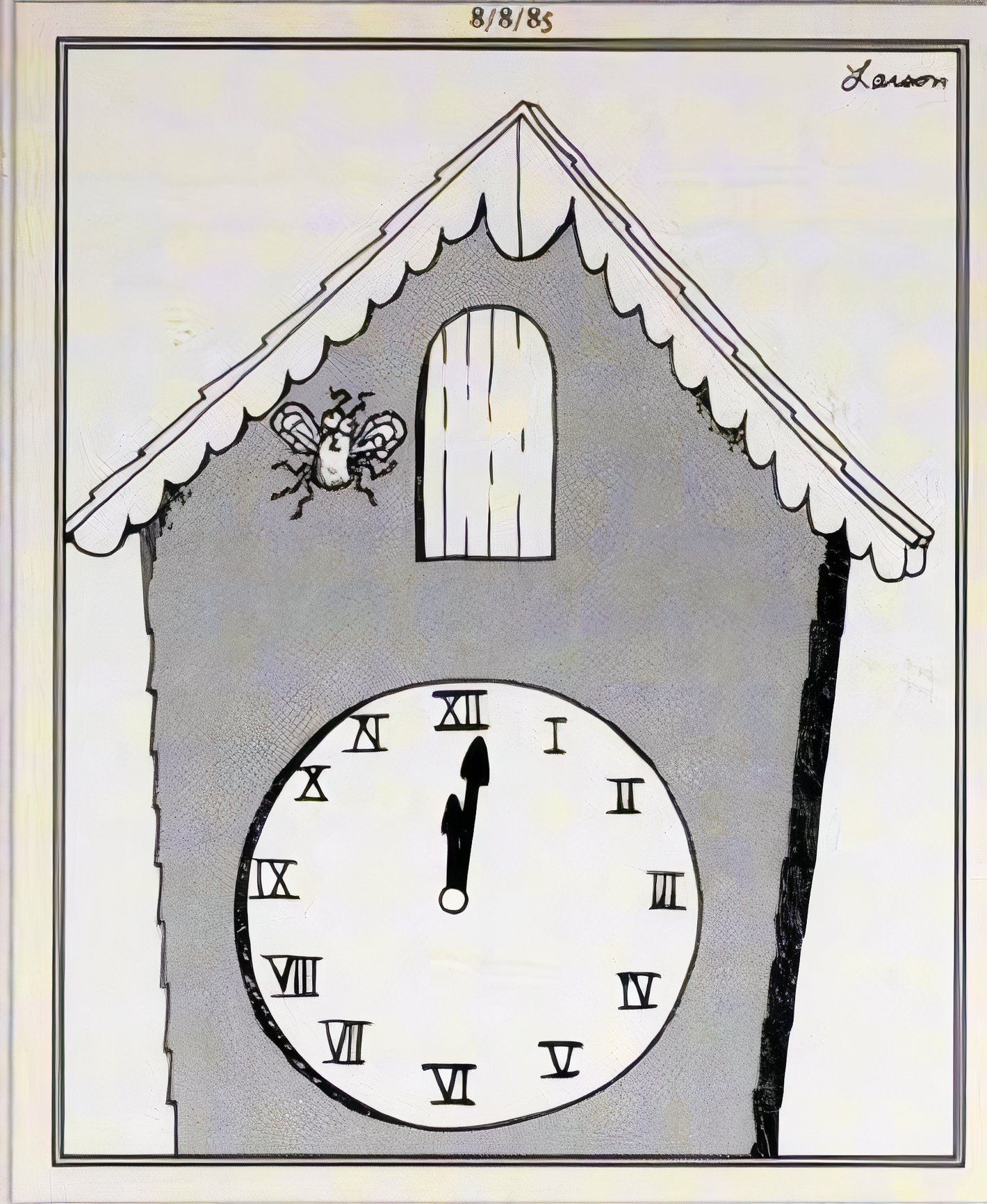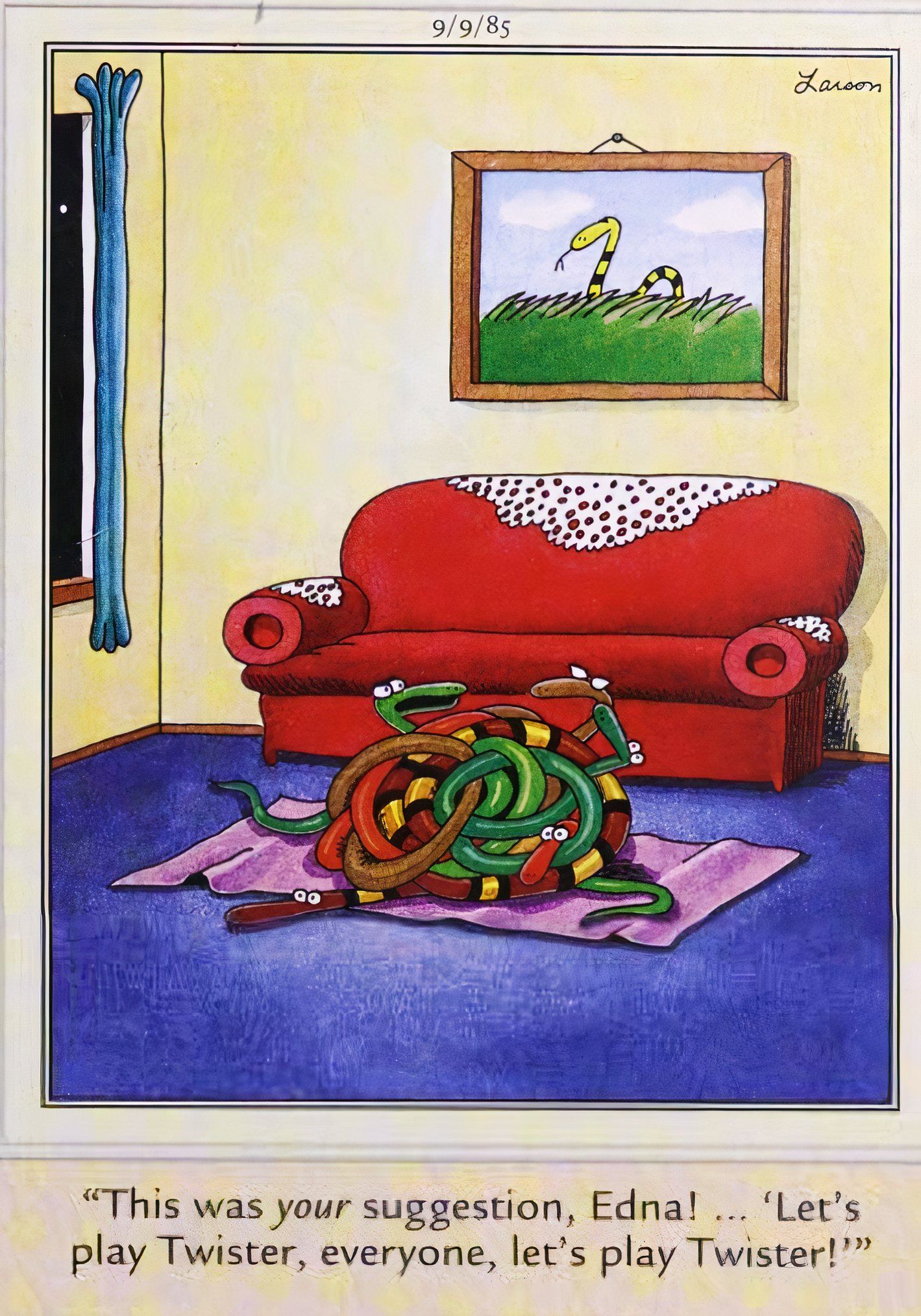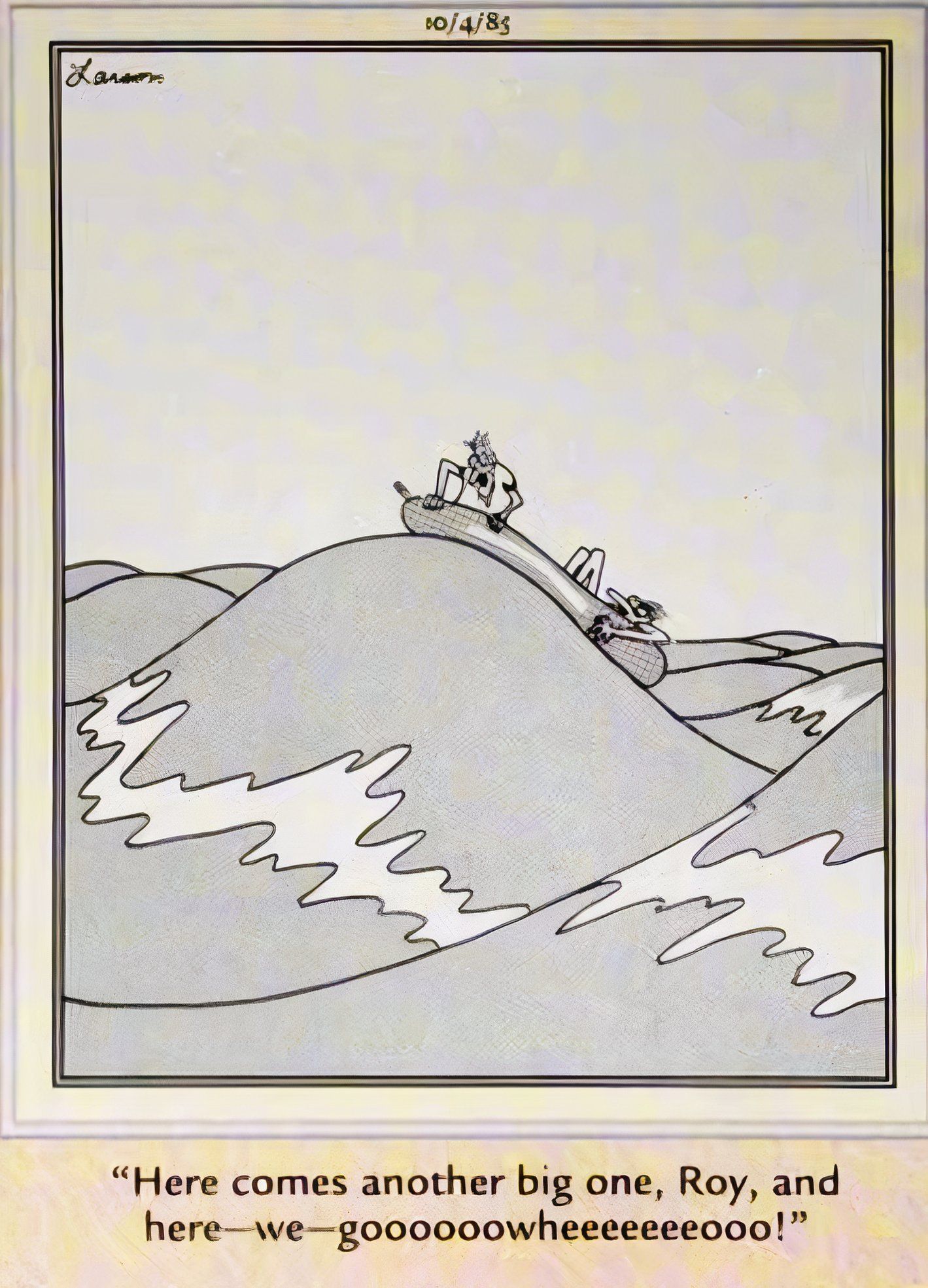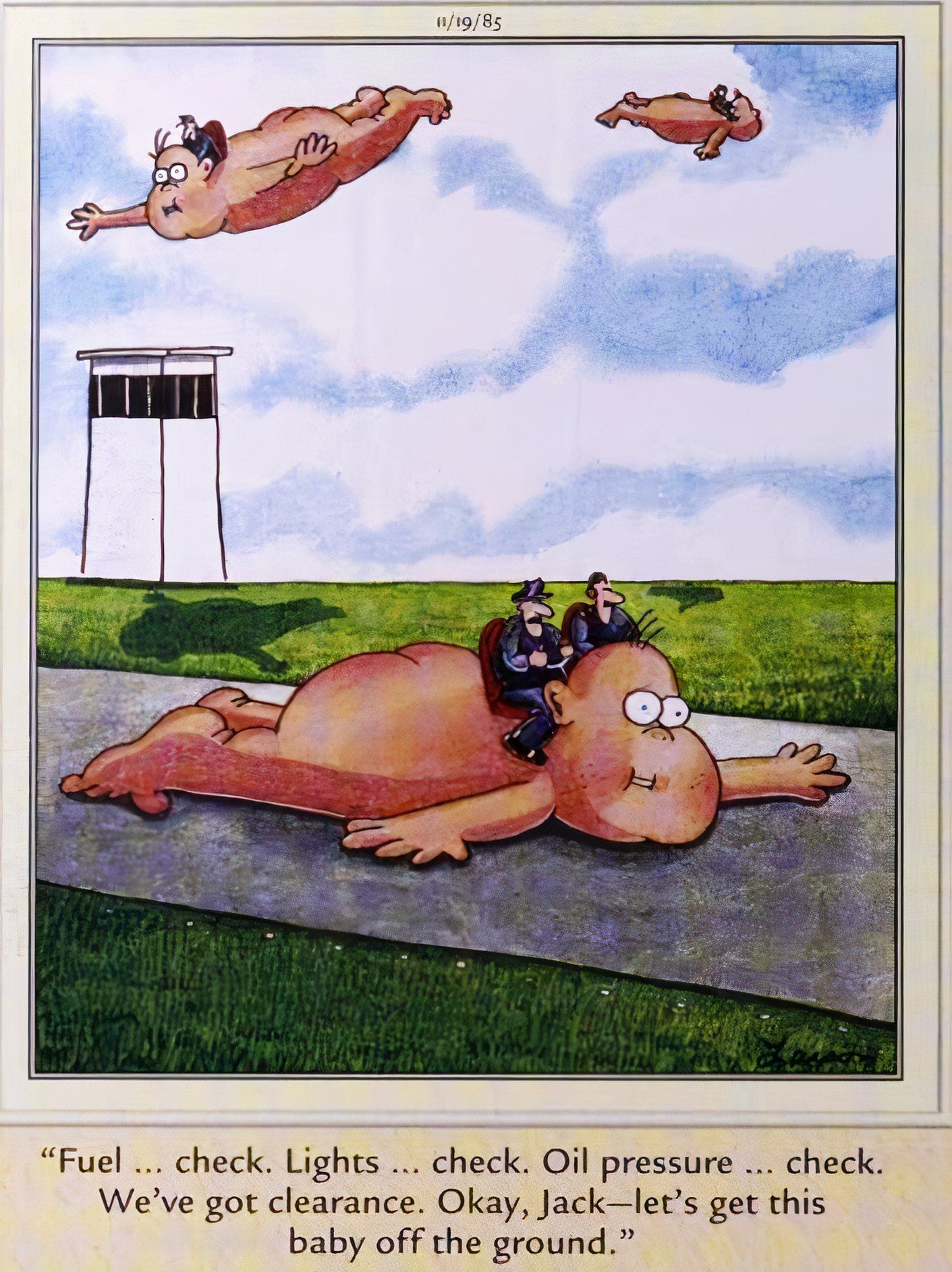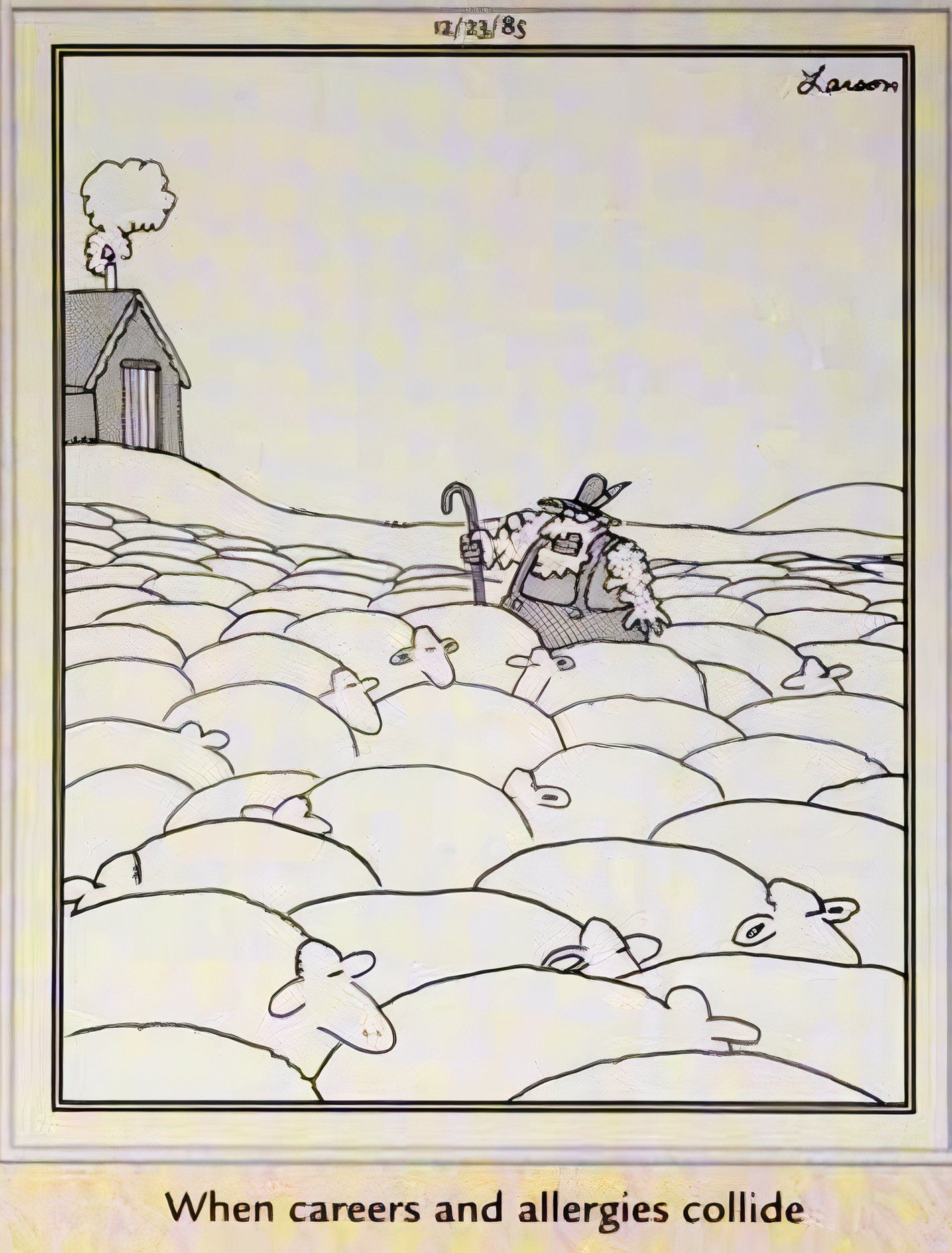Summary
- With his notorious comic strip
The Far Side
, artist Gary Larson sought to evoke immediate reactions from readers, whether that was laughter, confusion, or even anger. -
The Far Side’s
unique humor often left readers scratching their heads, as much as it had them laughing uncontrollably. - Gary Larson placed a lot of faith in his readers’ ability to engage with subtle, or even deliberately confusing humor – something that paid off in terms of his immediate success during his career, as well as
The Far Side’s
enduring popularity decades later.
According to Gary Larson, creator of The Far Side, he judged the success or failure of an individual cartoon by whether it got a reaction out of readers or not. While Larson most frequently sought to make readers laugh, he also produced comics that were designed to test what he called the audiences’ “What-the?” reflex.
In other words, whether the reader responded with a solid, sustained chuckle, was left utterly perplexed, or was straight up angry at The Far Side for existing, Gary Larson was satisfied. What mattered most to him was avoiding the worst possible outcome: a dreaded non-reaction.
While there is no exact science to quantifying a “What-the?” response, The Far Side offers a multitude of examples to analyze, in order to come to a greater understanding of how Gary Larson’s work achieved notoriety on a day-to-day basis during its time in publication – and beyond that, has endured in the popular consciousness.
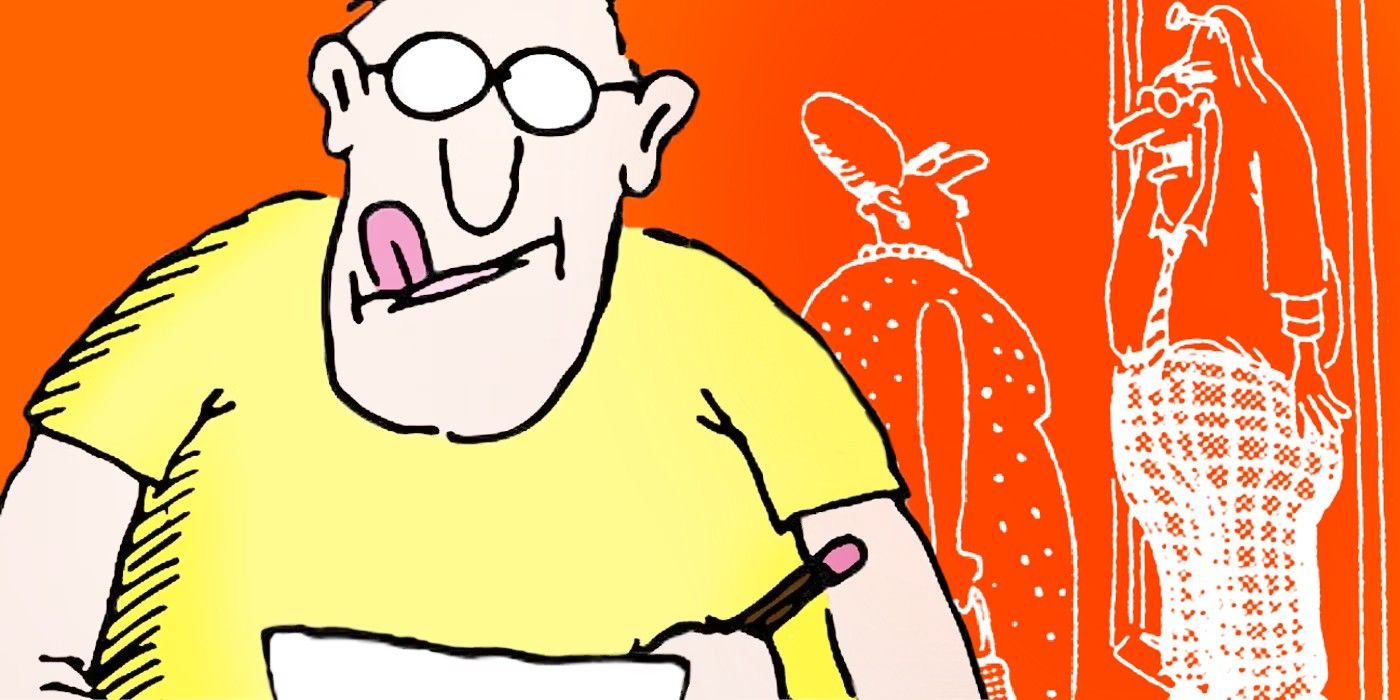
Related
12 Far Side Comics From 1981 That Make Readers Go “What The?”
The Far Side could be hilarious , but as often as it was intended to make readers laugh, it was designed to leave them scratching their heads.
12 Gary Larson’s Lonely Take On The Afterline Will Stir Something In Readers
First Published: January 4, 1985
As part of his experimental approach to crafting The Far Side, Gary Larson was willing to take risks, including being willing to take the chance that the audience might not appreciate a confused response as being equal in value to laughter, in the same way he did. Larson was also willing to venture into tricky territory, including the use of religious imagery and themes, and the insertion of deeply philosophical ideas into otherwise down-to-earth illustrations.
Here, the depiction of a solitary man on a cloud, having seemingly ascended to heaven only to find it to be a terribly lonely place, is not likely to strike many readers as uproariously funny; instead, it might in fact precipitate a quiet, contemplative sense of mortality – essentially, the ultimate “What-the?”
11 Gary Larson Put A Lot Of Faith In His Readers
First Published: February 7, 1985
The Far Side had its share of punchlines that were easy to miss, but in a way, this signaled that Gary Larson trusted his audience to be able to engage with his humor, even when it wasn’t smack-them-over-the-head obvious. That is the case here, as Larson depicts the crowd at “the Dog Comedy Film Festival” wagging their tails in vigorous approval at the performer on stage, off-panel.
Throughout The Far Side, Gary Larson achieved “What-the?” responses in various ways – effectively, by any means necessary. While some of his comics were expressly designed to confuse the reader, equally common were those that relied on the subtlety of its premise, and its execution, to make the reader do a double-take.
10 Far Side Comics Often Asked More Questions Than They Answered
First Published: March 5, 1985
Tarzan appeared, or at least was referenced, a handful of times in The Far Side over the years. However, while his role in other cartoons tended to be clear – if among Gary Larson’s more outright goofy interpretations of popular culture – his inclusion here is likely to raise one of just several questions that this Far Side installment seems crafted to raise in the reader’s mind upon viewing it.
Depicting a dog running excitedly through a jungle, the caption elaborates that “Tarzan and Jane forgot to tie up the dog,” before leaving home. Rather than clarifying, this context only makes the comic more perplexing, as there is a disconnect between the image and the text that makes the punchline fall short, while stirring the “What-the?” feeling which should be increasingly familiar to readers as they get acquainted with The Far Side.
9 Gary Larson Didn’t Know Where This Far Side Was Going Either
First Published: April 5, 1985
Gary Larson readily acknowledged that many Far Side comics were “confusing, obtuse, esoteric, and strange,” something that was a result of his intuitive creative process. While his ideas might have come from a deep reservoir of creative energy within him, the actual drawing of the cartoons was all about trial and error, with the average Far Side resulting from hours spent drawing and re-drawing, trying different captions, and tweaking until the artist was satisfied.
This panel – featuring a herd of buffalo stampeding from the distant horizon past the frame of the image, with a caption reading “as if we all knew where we’re going,” – feels as if it is Larson sly admitting that he is just along for the ride with The Far Side, as much as any of his readers.
8 Admitting Hard Truths Face-To-Face Is Better Than A “Dear John” Letter
First Published: May 29, 1985
This cartoon has the distinction of being among The Far Side’s strangest, and at the same time, its silliest. Gary Larson often featured anthropomorphized inanimate objects, but this panel takes it to the next level, as the letters of the alphabet leap off the page and live entire, complex lives.
Here, a lower-case “h” admits to her husband, a capital “R,” that she has been “seeing all the vowels — a, e, i, o, u,” before even amending, “oh, yes! And sometimes, y.” This Far Side takes a harsh reality and warps it into peak absurdity through the collusion – perhaps even, to a degree, conflict – between elements and tones here. In that way, it stands a strong chance of getting readers to laugh in spite of their inevitable “What-the?” reaction.
7 Often In The Far Side, Appearances Could Be Deceiving
First Published: June 13, 1985
The way that a Far Side comic’s illustration and caption worked together tended to be essential to its effectiveness as comedy – except often, Gary Larson deliberately withheld captions from the audience, forcing his art to speak entirely for itself.
Even in cases where the punchline was plain enough – as is the case in this comic, featuring a pair of sight-seers who have stopped to enjoy an incredible desert sunset, only for it to be revealed to be a fake, with someone on the other side lifting the landscape to sweep some dust under it – the lack of caption often changed how it impacted readers. Here, many readers won’t be able to help themselves from wondering what else there is to this unspoken story.
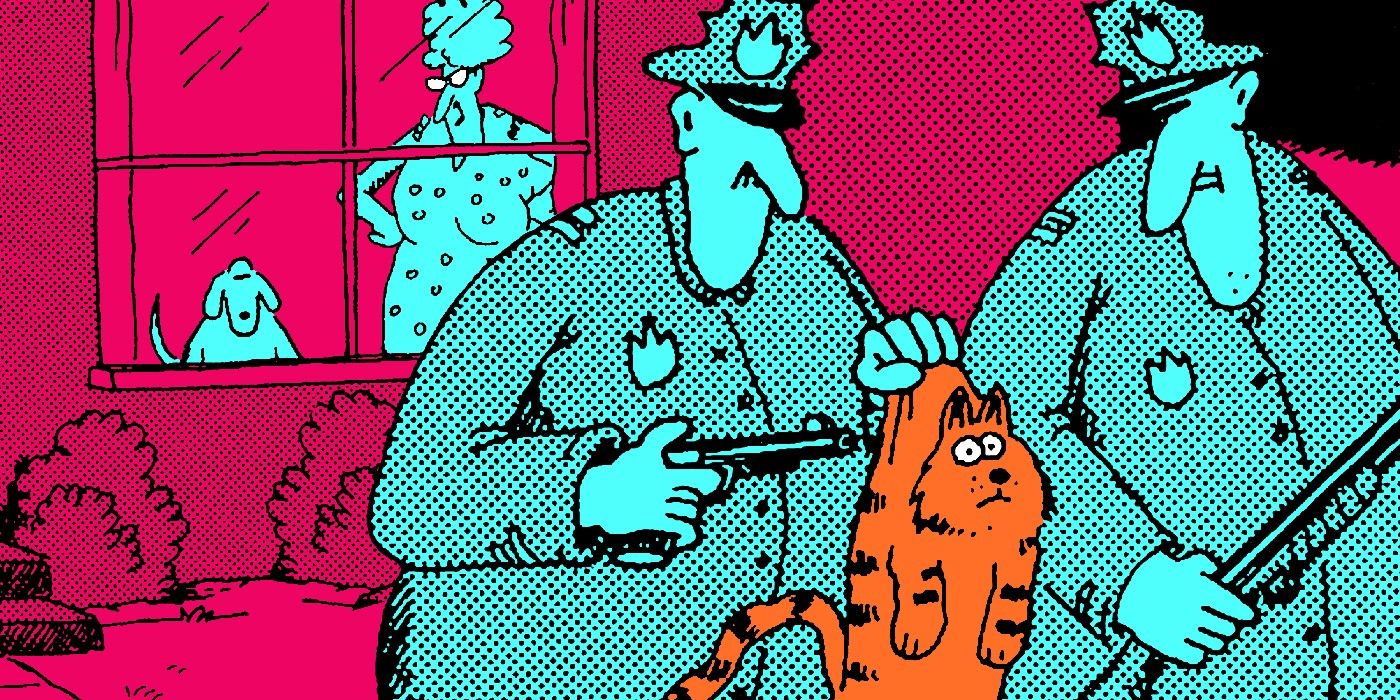
Related
12 Far Side Comics From 1982 That Make Readers Go “What The?”
According to Gary Larson, his notorious comic The Far Side was often designed to leave readers scratching their heads, wondering “What-the?”
6 Gourmet Is In The Eye Of The Beholder
First Published: July 8, 1985
The punchline of this captionless Far Side not only functions, it does so effectively. This is a particularly amusing incarnation of Gary Larson’s perennial depiction of cows and humans interacting in unusual ways; stranded together at sea in a life raft, a man looks at his cow companion and envisions a steak, while the cow gazes back and pictures a mound of grass.
The absurdity of this cartoon is delightful, but odd as it may seem, what makes this a “What-the?” installment of The Far Side is actually the simplicity of its premise. Readers are liable to be amazed that such a ridiculous joke could also be so obvious, and that only someone who was looking for the surreal in the familiar, such as Gary Larson, would be able to extract it.
5 Sometimes When The Clock Strikes Twelve It Really Hits Hard
First Published: August 8, 1985
This entry goes hand-in-hand with the previous one, as they operate nearly identically, and to a similar degree of success. Here, no caption is needed, as the joke is clear: a fly landed in the wrong place at the wrong time, on a cuckoo clock, just at the turn of the hour, leading the insect to be squashed by the clock’s miniature door as it swung open.
Again, whether this evokes an amused smile, or an outright “ha,” from the reader, that will invariably be accompanied by amazement that Gary Larson could even have arrived at this joke – though certainly, most will be impressed by his ability to find humor in the most minute details.
4 These Far Side Snakes Should Have Known To Pick A Different Game
First Published: September 9, 1985
A “What-the?” response could come at either the premise-stage of a Far Side comic, or in its execution. This is an example of the former; the basline absurdity of a group of snakes gathering together on game night and selecting twister, leading them to become hopelessly entangled, overpowers the execution of the joke, which is highlighted by the exasperated caption, in which one snake, Esther, takes the blame.
Gary Larson frequently drew snakes, and to his credit, this is one of the most memorable Far Side snake cartoons; that said, it is more apt to provoke an initial response of incredulity from readers, rather than sustained laughter. Certainly, laughter and “What-the?” responses were not mutually exclusive, though one often primacy over the other.
3 Sometimes The Far Side Was All About Just Riding The Wave
First Published: October 4, 1985
This panel belongs to the subtype of Far Side comics that fall into the “What-the?” category because they lack a strong punchline. Here, two men lost at sea in a raft crest a large wave, with one of them enthusiastically shouting as if it were an amusement park ride, rather than a life or death experience.
The humor of the panel’s premise can certainly be inferred, but it is unlikely to strike the reader as immediately laugh-out-loud funny. Instead, it is more reasonable to expect that this Far Side comic will leave the reader puzzling over it, in a way achieving a secondary “fall-back” reaction in the event of a failure to amuse the audience.
2 The Far Side’s “Babyport” Will Have Reader’s Screaming “What-the?”
First Published: November 19, 1985
This cartoon is without a doubt one of the most jaw-dropping, ridiculous panels that Gary Larson produced in the fifteen-year run of The Far Side. Set at an airport, except one where giant babies have been substituted for planes. This borderline-unsettling “babyport” punchline all stems from Gary Larson’s recognition that people often use “baby” to refer to inanimate objects, particularly vehicles, making it an example of the artist’s twisted version of observational humor.
This is made clear in the caption, as two pilots sitting on the tarmac waiting to get their flying infant skybound say “let’s get this baby off the ground.” Certainly, this is one Gary Larson’s most outrageous illustrations, with both premise and execution, both image and caption, working together to leave readers flipping out, demanding to know “What-the?”
1 This Far Side Shepard Might Want to Consider Another Line Of Work
First Published: December 23, 1985
One of the last Far Side comics of 1985, this depiction of a farmer having a severe allergic reaction to his flock highlights the way Gary Larson worked within his perceived limitations as an artist. Here, the most amusing aspect of the illustration is the way that the sheep are drawn without their characteristic fluff – which is transposed onto the farmer, as he swells following exposure to the animals.
The composition of the panel also adds to its “What-the?” quality, as the farmer is set just off-center of the frame, at a bit of a remove from the reader’s perspective, making the visual aspect of the joke less-than-immediately-obvious. While Far Side fans will certainly smile at this cartoon, most readers will consider it another of comic’s more understated entries.
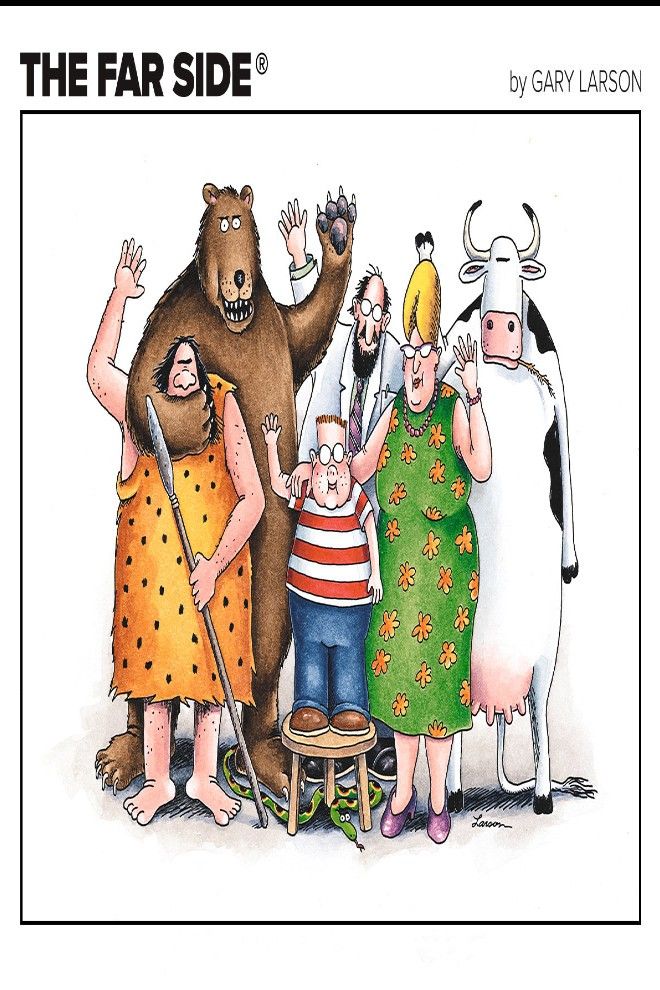
The Far Side
The Far Side is a humorous comic series developed by Gary Larson. The series has been in production since 1979 and features a wide array of comic collections, calendars, art, and other miscellaneous items.

